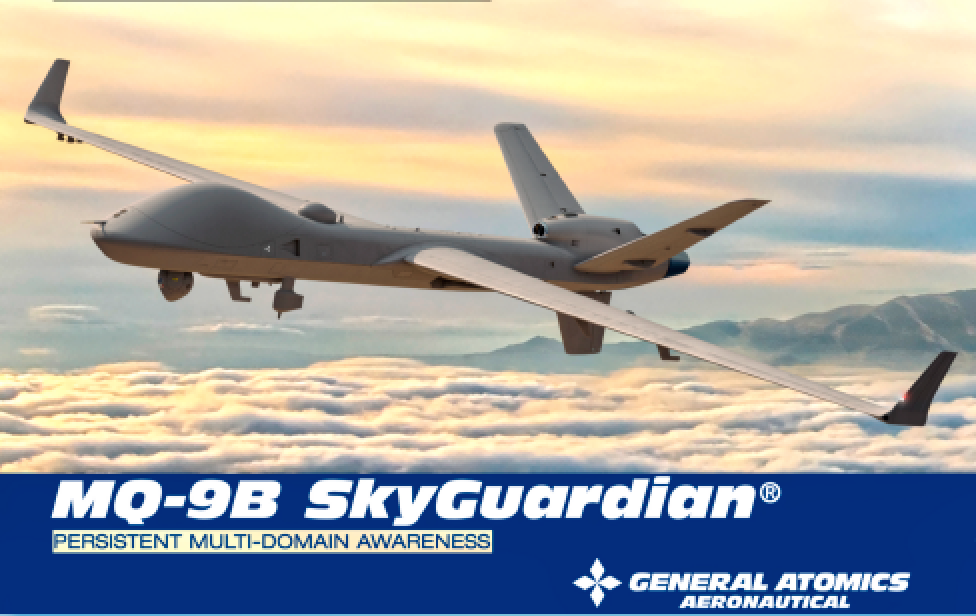Over the past decade, commercial providers have played an instrumental role in helping the U.S. military make the best use of remotely piloted aircraft capabilities.
These firms have built the aircraft, developed sophisticated sensors as well as the electronics used in flying the planes, and provided the satellite bandwidth needed to operate RPAs on distant missions from half-way around the world.

However, military forces flying RPAs have faced a challenge in preventing the satellite signals from being jammed in hostile environments. Techniques, such as frequency hopping or blocking certain frequencies, have been developed with some success, but adversaries continue to find ways around many of these efforts.
Now companies that specialize in terrestrial and space networks are developing software that takes anti-jamming capabilities to whole new level. With such software built into an aircraft’s electronics, it can change not only the frequency of the signals flowing to and from the RPA, but also switch from one frequency band to another, from one satellite to another, from one constellation to another and even from one waveform to another.
New network management software can move a signal from K-band to X-band, from an Intelsat satellite to a government WGS spacecraft, from an O3B satellite in Medium Earth Orbit (MEO) to a OneWeb satellite in Low Earth Orbit (LEO) — all in a matter of milliseconds. A hostile jammer would not even know where to look to find the RPA signal.
Hughes began the development of this capability a few years ago under a demonstration study with the U.S. Air Force (USAF). We did a pilot program for the military and continued to develop the technology on our own to build into our overall network management system. We call the resulting software agent our Smart Network Edge. Such network management software is continuing to evolve and is being looked at by several branches of the military.
Traditionally, the connection to the RPA is controlled from the ground. When jamming is detected, the network and its operators look for ways around it to maintain the link to the RPA. In the past, this has sometimes even involved an old- fashioned phone call from one ground operator to another to switch frequencies.
Smart new solutions are moving the anti-jamming control from the ground station to the terminal inside the RPA, automating the entire process with machine learning and artificial intelligence capabilities built into the network management software. The RPA then controls the process, directing the incoming and outgoing data flow to the clearest, most efficient path.
RPAs use two different connections when in operation. One is the Command & Control (C2) signals from the pilot on the ground flying the aircraft and operating its weapons systems. The other is for the video and other sensor feeds going mostly from the RPA to ground analysts making decisions based on the data being collected.

When applied to either or both of these connections, the network software detects and prevents jamming as ads well as directs data to the most efficient path for the data transmission in question.
For example, it might use a GEO satellite if the signal lag known as latency is not important. Or, it might use a LEO satellite when low latency is an important factor.
The satellite orbit selected also affects the data flow as the antenna on the RPA is so small. When connected to a distant GEO satellite, the throughput might only be around 12 megabits per second, while a closer MEO satellite would provide 70 Mbps and a LEO constellation around 100 Mbps— speeds that can make all the difference in critical military and humanitarian decisions.
We have worked on developing our Smart Network Edge software with General Atomics Aeronautical Systems (GA- ASI), a leading developer of RPAs and manufacturer of the well-known MQ-9 Reaper, sometimes called the Predator B. We engaged in a demonstration late last year and installed our network manager on GA-ASI’s new, MQ-9B SkyGuardian RPA. In the demonstration, the software switched signals smoothly between GEO and MEO satellites operated by the commercial provider, that being SES.
The next milestone we and others are working toward is the full integration of communications on RPAs with direct sequence spreading, combining the data signal with a high data rate bit sequence to improve jam resiliency and reduce the probability of intercept and exploitation. With this capability, engineers will be able to configure a signal so that it virtually disappears, making jamming all but impossible.
Multi-orbit and multi-spectrum connectivity makes absolute sense for RPA applications because it ensures greater resiliency for flight operations. Combining multiple transports, with enabling technologies, such as the Hughes Smart Network Edge, and managed services integration, will unlock the value of all these new and existing constellations in primary, alternate, contingency, and emergency (PACE) planning and execution.
General John Raymond, who served as first chief of the U.S. Air Force Space Command before retiring late last year, emphasized that he measured military readiness on the ability to “fight tonight.” Ensuring secure communications with RPAs is a vital part of that readiness.
www.hughes.com

Author Rick Lober is the Vice President and General Manager, Defense and Government Systems Division (DISD) at Hughes Network Systems, LLC (HUGHES) and leads the company in serving U.S. and allied defense and intelligence organizations worldwide with advanced SATCOM solutions, commercial and Department of Defense (DoD) purpose-built systems, network management and software defined networking, ground and airborne communications on the move, 5G terrestrial and all company classified programs. Mr. Lober brings 25+ years of experience with COTS and full MIL comms and intelligence programs. He is also a Senior Contributor for MilsatMagazine.


